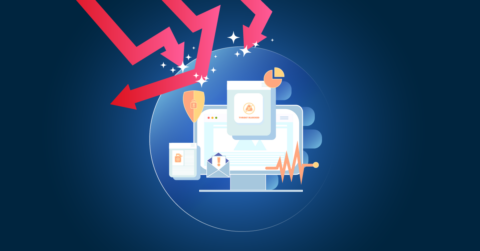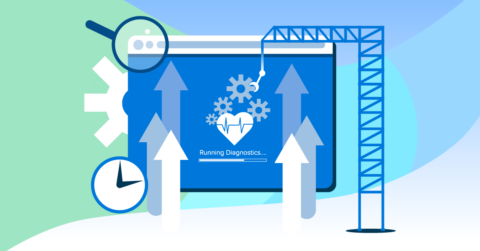
Lúgh Studio’s Ultimate Guide to High Converting Landing Pages
01/03/24
convert leads
If your business has any kind of online presence, it’s essential to use landing pages. But what are they, why are they important, and how can you make sure they are as effective as possible?
Download Your PDF Version Of This Guide Here
These are the questions we are exploring in Lúgh Studio’s latest ultimate guide. We will also be providing you some insight into the kinds of tools you might consider using when creating landing pages. Grab a cup of coffee and let’s get started!
Why Are Landing Pages Important?
How to Create a High Converting Landing Page
…
What Is A Landing Page?
At its most basic, a landing page is a website page that has a specific purpose: to convert people that land on it into a lead. The page will do this by asking people for their contact information in exchange for some kind of value. This is usually a lead magnet.
The contact information that people provide will typically be their email address. This makes it easy for the company to follow up with effective email marketing. However, a landing page can also ask for other contact options like somebody’s phone number.
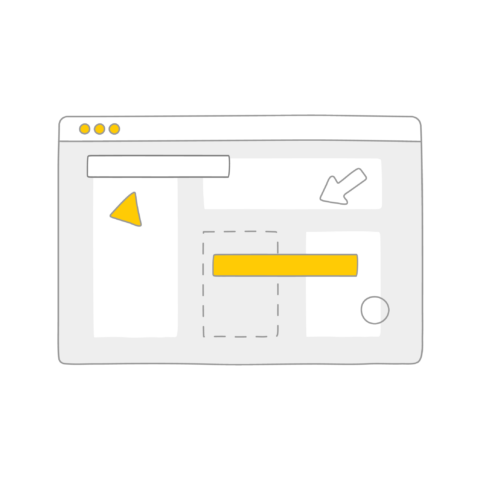
The entire purpose of these landing pages is to gather leads. These are people that have an interest in whatever free value you offer, but that might need a little more convincing before they become a customer. If paying customers are the lifeblood of your business, and there are people out there that might become customers in the future, landing pages are how you bridge this gap.
Why Are Landing Pages Important?
We’ve already mentioned that landing pages are a great tool for collecting leads. But why not have a signup form anywhere on your website? Why not simply give people the option to sign up for your lead magnet on your home page?
While this is also a strategy you can consider as well, it’s not nearly as effective as a dedicated landing page. This brings us to the biggest benefit of a landing page: it eliminates distraction.
By having a page devoted to one thing and one thing only (getting people to input their contact information in exchange for something of value) you eliminate all other possible actions. No additional buttons to click, no videos to watch, no page to scroll down…the only thing to do is sign up.
Let’s be honest: when you are trying to generate leads, you don’t want to give people a lot of options. This is one of the reasons a landing page is often called a “squeeze page”: you are squeezing the visitor into either opting in or clicking out. Less options increases the odds that the person actually does what you want them to: signing up. Less distraction, less choice, and more leads for your company.
Of course, that’s just the psychology of a landing page. Let’s now look at some more tangible benefits to implementing more of them on your website:
- More subscribers (which equals more customers). You’re in business to make money, and generating more leads is one of the most reliable ways to do that. For more information on reliably generating leads for your business, give our guide to lead generation a read.

- More professional. A well-crafted landing page simply looks better than a homepage that has a ton of buttons. It’s simple, elegant, and easily understood. This has a ton of side benefits to it: you earn the trust of your visitors more quickly and build your number of leads as a result.
- Simplified marketing. With just a few landing pages, there are less things to worry about. You aren’t trying to be everything to everyone. Instead, you are taking just a few things you offer (valuable lead magnets) and distributing them to the people that matter (people interested enough to sign up). This makes things easy for you. Plus, you can always share links to your landing pages anywhere on the internet. How’s that for efficiency?
Simply put, landing pages are a quick and effective way to generate more leads for your business. Plus, they’re actually quite easy to set up. Before getting into the tools that help you create them, though, let’s dive into some best practices. Follow these whenever you start setting them up and you set yourself up for success.
How to Create A High Converting Landing Page
1) Keep it simple
The entire reason that landing pages are so effective is their simplicity. By not asking people to do too much (and not giving them the option to) you are increasing the odds that they actually fill out the relevant form. This has been demonstrated countless times with people when given too much choice: they simply don’t act.
So what should your landing page look like? The most effective version of one will usually have just a few elements: some text explaining why they should sign up, some sort of value promised if they do (see next tip), a field for them to input their contact information, and a button they will click once they have. Simple, to-the-point, and completed quite quickly.
2) Provide a lead magnet
You see sign up forms all the time that simply ask people to sign up. Nothing in return, and no value delivered. This is an ineffective way to design landing pages and not very convincing at all. Indeed, you are asking people for their contact information and not really giving them anything in return. Not the best strategy!
That’s why you need to provide a free lead magnet. While this can be just about anything, it should try to solve a problem you know your audience has. Check out this guide from Hubspot for some interesting ideas.
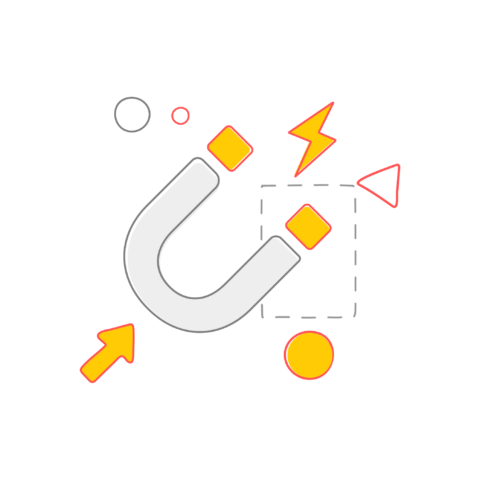
3) Write compelling copy
A simple landing page with a solid lead magnet won’t perform well if your copy is poor. Landing pages are yet another example of how important good copywriting is to just about every aspect of your business.
Generally, your copy needs to be clear. Not only about what the person will receive upon signing up, but what comes after, as well. This means that you should direct the visitor to the next step (“Write your email address and click the button below”). In addition, it’s a good idea to use personal language (“Download your free guide here”). Check out this guide for more easy-to-implement copy tips.
4) Make your landing page responsive
Just as with your entire website, your landing pages need to be consistent across all devices and browsers. This is easy to forget, but you do so at your own expense. The fact is, as more and more of your site visitors visit your website on mobile, landing pages that don’t transfer over cost you leads (and future customers).
Be sure to always test your landing pages before going live. This guarantees that what you want it to look like is actually what’s presented to your audience.
5) Keep the sign up form above the fold
Ideally, your landing page should literally fit on one page without the need for the visitor to scroll. This increases the likelihood that the person actually signs up. It also gives the all the “need to know information” at a quick glance.
Of course, this isn’t always actually possible. Depending on how complicated your offer / lead magnet is, you may very well want to provide more information. However, even if you do, there should be at least one option to sign up at the very top (above the fold). This gives you the best chance for conversion, even if your landing page is relatively long.
6) Use a thank you page that matches the design of your landing page
You want to thank people for signing up. They have just trusted you with their contact information, and depending on how much they’ve interacted with your brand, might not know so much about you. That’s why it’s so important to include a thank you page.
Still, you don’t want just any page. Instead, it should match almost exactly the style and design of your landing page. This creates a kind of fluidity that your visitors will appreciate. Think about your own online activity: how would you feel if you signed up for somebody’s list, and then the page you saw directly after looked completely different from the original landing page? This is a “jarring” experience you want to avoid in order to retain the trust of your leads.
7) Be ready with effective email marketing
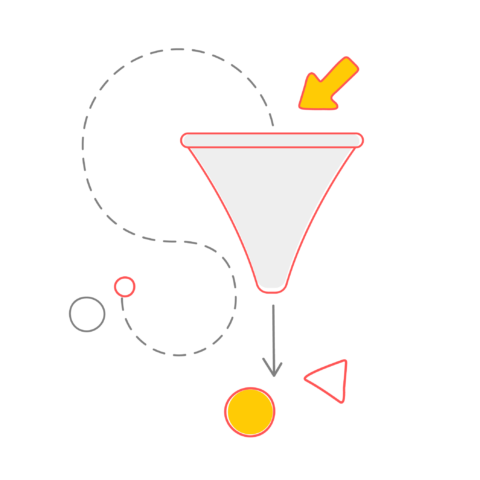
If you are using lead magnets, you are likely asking for email addresses. The people that sign up will therefore be added to your email service provider and you will communicate with them via email.
As for what this means? You need to have a plan for email! Indeed, if the entire goal of good landing pages is to get more email signups, your results will be a letdown if you don’t have email marketing in place that gradually builds a relationship with your leads.
Really, the importance of good email marketing here can’t be overstated. So think about it before you even get started. What kinds of emails will you send them? How often will you email them? What sort of automations will you add them to, and what is the goal of these automations in the first place? This especially is an important question to consider, so be sure to read our guide to the most important email automations.
Tools You Can Use
Now that you know why landing pages are so important, as well as some best practices for setting them up, what are some tools you can use?
While there are a quite a few options you might consider, here are just a few options:
Leadpages
With this tool, it’s quick and easy to make landing pages. This is due to Leadpages’ drag-and-drop editor. There are also great analytics you have access to with the tool so you know exactly what’s working and what’s not.
That said, there are certain elements that aren’t so easy to fine-tune. Still, Leadpages is quite affordable and a great option for most businesses.
Unbounce
Trusted by over 15,000 businesses and brands, Unbounce is a great option if you are looking to build professional looking landing pages. With a ton of options for templates that you can quickly implement, getting started is a breeze. Plus, with great options for A/B testing, you can always be testing new versions of landing pages.
One thing to look out for with Unbounce is sporadic problems with mobile responsiveness. This might not be such a big problem if you know most of your visitors are using a desktop, but this is usually a risk you shouldn’t take. Either way, the pros definitely outweigh the cons when it comes to Unbounce’s capabilities.
GetResponse
This is a great option if you are a business on a strict budget. That’s because GetResponse allows you to set your target list size and pay only based on what you actually need.
Plus, if you are planning on building landing pages with images (often a good idea), GetResponse gives you access to Shutterstock included. While these are only stock photos, they make your landing pages more interactive (and more effective).
Mailchimp
If you want a tool that not only allows you to build landing pages, but seamlessly integrates them with your email marketing, look no further than Mailchimp. As one of the leading email service providers, Mailchimp is your “one stop shop” for all things to do with landing pages. Simply connect them to your different email lists and you’re ready to go!
The main drawback with Mailchimp is that there’s a bit of a learning curve. The landing page builder isn’t as advanced as other tools and it will definitely take some getting used to. Still, assuming you learn the in’s and out’s of Mailchimp, it’s a powerful tool for building landing pages that convert.
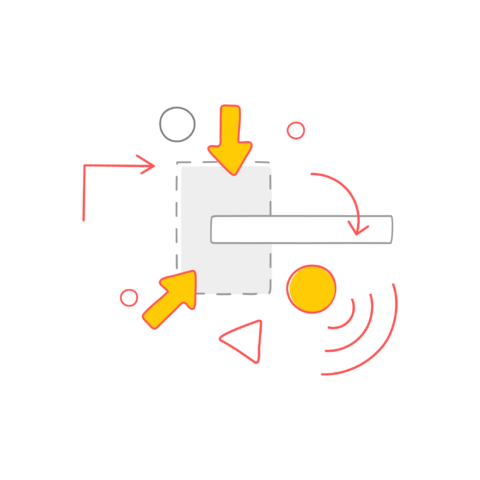
Conclusion
Landing pages are a great way for any business to build their audience over time. They provide value to your site visitors and make it easy to generate ever more leads for your company.
Download Your PDF Version Of This Guide Here
Follow the tips in this guide and let us know if you ever have any questions!



